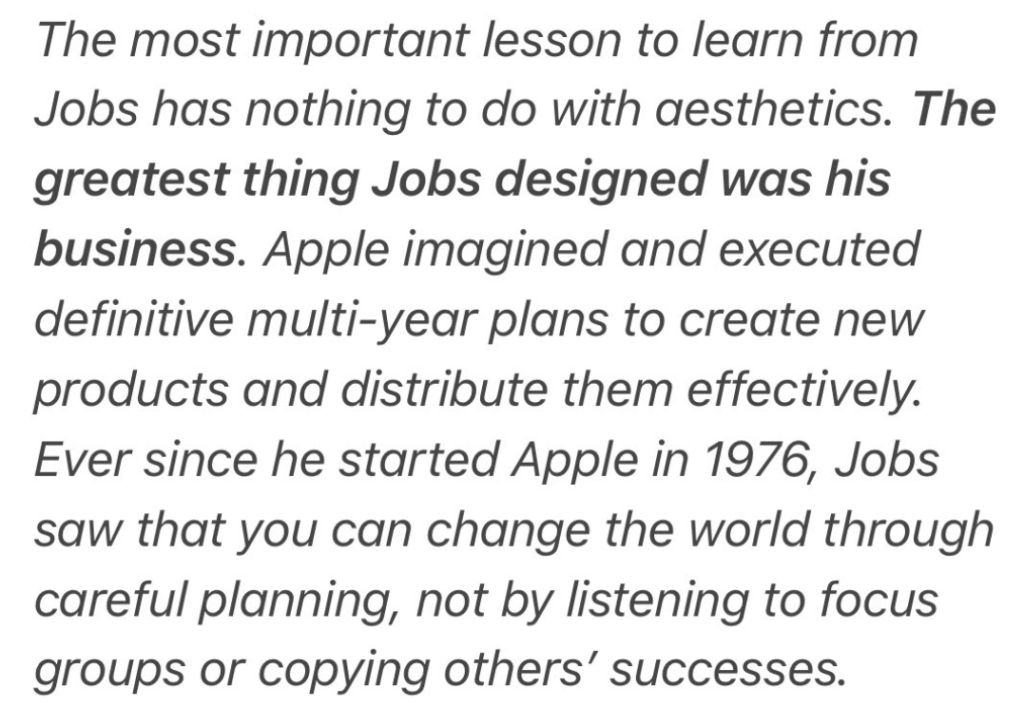The Method Episode #30

A Business Is Built – How To Avoid A Job
TL.DR: A rant about what a business is and why they are built, not grown.
Get work, do work, get paid, spend pay. Does that sound familiar?
That’s a job; that’s a life of trading time for money.
But it’s also the life of many business owners who have just created a job for themselves. The only difference is they’re working for themselves instead of someone else. And there’s nothing wrong with that as long as you’re happy trading time for money, ad infinitum.
But if you want more than a job, you’ve got to build something.
You can grow a business to a million dollars in revenue, and it still be a job.
A proper business is different. A real business doesn’t use you; it leverages you.
Instead of trading an hour for $30, it helps you trade your hours for hundreds or thousands of dollars.
When you work for yourself, you can only ever 1x your inputs (time). A great business can 10 or 100x your inputs. That is leverage.
And you create that leverage by combining resources, systems, intellectual property, software and so on in unique ways to create something a market wants.
A machine that consistently makes that happen, with or without your input, is a business. And it is built, not grown.
People say Steve Jobs was a great entrepreneur because he designed useful products. That’s not the whole truth. Steve Jobs was a great entrepreneur because he built a great business.
Key Takeaway: Businesses are machines that combine inputs in unique combinations to produce more valuable outputs than the sum of their parts. In this case, 1 + 1 = >2.

Why Most Customer Feedback Is Useless – Finding Common Threads
TL.DR – A look at why most customer feedback is useless and what to focus on instead
They say customers are always right.
I’m not convinced.
Customers are justified in saying whatever they want about your business – freedom of speech and all that. But that doesn’t mean you should listen.
In my experience, most customer feedback is useless.
This is a core bug of software development. As users request more and more product features, product managers have to try and choose what they should actually build.
Generally, the right features to build are the ones that add the most total value. And it’s not always obvious which ones these are. See, some features add a ton of value for three users. In comparison, others add a small amount of value for millions of users.
If you keep adding features that are high-value for a limited number of users. You end up with something like Microsoft Excel – a program even the developers don’t know how to use.
A better approach is to act on the feedback that creates the most value for your core customer group.
I do this by looking for common feedback threads.
If one customer complains about rude service – maybe your staff were having a bad day. If you get 20 complaints about rude service every month, you have a problem worth fixing.
If one customer asks for same-day delivery, they may be just needy. If 100 customers ask for same-day delivery every week – you’ve found a high-value improvement to make.
Key Takeaway: Act on common threads of feedback and requests to create the most value. Most of the time, you can ignore the rest.
“A book is a bargain. A screaming bargain. You pay 15, 20 bucks for something that might change your life.”
~ Seth Goddin
Where We’re Learning
• How To Focus-> Andrew Huberman (Neuroscientist) breaks down how to improve your focus in 10 minutes.
• The Top Idea In Your Mind -> Another gem from Paul Graham, explaining why you generally have one main priority at a time. He uses his experience with raising capital and investing in startups to explain.

The Opportunity Cost Of Maintenance Work
TL.DR A look at why entropy slows your business down and makes it a less fun place to work.
Last week we talked about why reducing entropy is a valuable activity to partake in during slower economies.
Recall entropy is system waste due to disorder, and in all systems, entropy increases over time.
Like a car, the older the vehicle is, the more it breaks down and the more it costs to keep on the road. This cost is usually referred to as maintenance.
A business is the same; it has a maintenance cost. The larger the business is, and the longer it operates, the more it costs to maintain.
In a capital-intensive business like a manufacturing plant, these maintenance costs are obvious – like greasing gears, replacing circuit boards, etc.
In digital businesses or the back office of that manufacturing plant, the maintenance costs are less noticeable.
Maintenance work is generally “manual, repetitive, automatable, tactical, devoid of enduring value, and scales linearly as a service grows.” Like paying accounts, responding to emails, buying office supplies and so on.
Slow growth, low innovation businesses spend a high percentage of their resources maintaining their business and not much building it. In contrast, high growth businesses spend a large percentage of their resources building rather than maintaining.
I would also argue that the least fun businesses to work in are the ones that require the most maintenance work. The ones where staff spend all their time fixing or trying to prevent yesterday’s problems. And the most exciting, fulfilling places to work are the ones that spend most of their time building new things for tomorrow.
As a business architect, figuring out how to reduce entropy is worth at least some of your time. As I hinted earlier, reducing your company’s surface area and upgrading to new ways of doing is where to start.
Key Takeaway: Maintenance work is wasted energy spent fixing yesterday’s issues that is better spent building your business for tomorrow.



